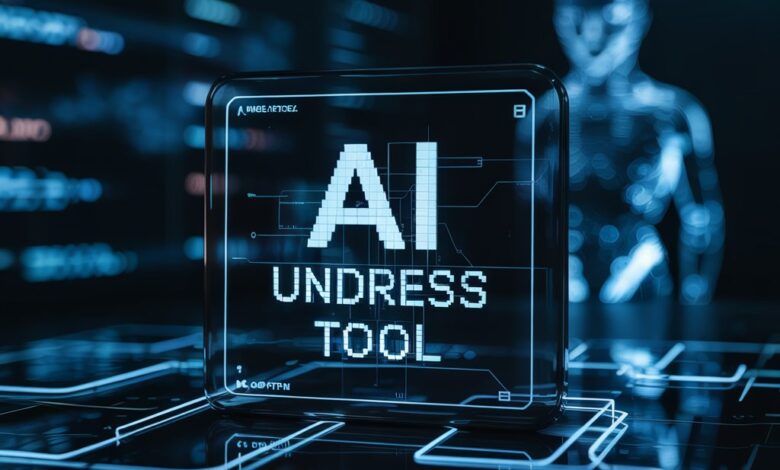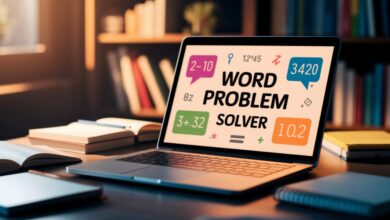AI Undress Tool: Exploring the Controversy and Impact on Digital Privacy

The AI undress tool is gaining attention, but it’s important to understand what it actually does and why it raises so many concerns. This tool uses artificial intelligence to create non-consensual images or videos where people appear to be undressed, even though they never agreed to such content. The technology behind it is similar to deepfake software, which manipulates digital media in a way that can be harmful, unethical, and illegal in many places. In this blog post, we will take a closer look at how the AI undress tool works, the risks involved, and the growing debate about its use.
The AI undress tool works by analyzing images and then generating new versions, where it replaces clothing with digital alterations. While it may sound like a harmless piece of tech, the reality is that it often leads to the creation of harmful, exploitative, and sometimes illegal content. Many of these tools operate without proper regulations, making it easier for people to create fake images or videos of individuals without their consent. This has raised alarms in many countries, where laws are being proposed to protect people from this kind of abuse. However, the technology continues to develop rapidly, and it’s important for society to have conversations about how to regulate such tools in a way that protects privacy and consent. As more people become aware of these AI-driven technologies, there’s a growing need for stronger ethical guidelines in the world of digital content creation.
What Is an AI Undress Tool and How Does It Work
An AI undress tool is a type of artificial intelligence technology designed to create altered images or videos where people appear to be undressed, even if they are not. This technology relies on advanced algorithms that analyze images and generate modified versions, often replacing clothing with digitally created nudity. The AI uses data from vast databases of visual content to produce these results based on the images provided by users. While it may sound like a harmless tech, it poses serious risks. Its use can violate privacy, cause harm to individuals, and even result in the creation of illegal content. As the technology advances, the concerns around the misuse of AI undress tools grow, raising urgent questions about regulation and ethics.
The Technology Behind AI Undress Tools: A Closer Look

AI undress tools use deep learning models, particularly convolutional neural networks (CNNs), to analyze and modify images. These tools often rely on pre-trained datasets that contain large volumes of visual material, allowing the AI to predict and generate realistic changes to images. By identifying the objects in an image, the AI can simulate removing clothing and creating lifelike visuals of a person’s body. This deep learning technology enables the AI to understand the structure, clothing, and anatomy of individuals, making the altered images highly convincing. However, while the technology itself is impressive, it raises ethical issues and poses significant challenges in terms of consent, privacy, and legal boundaries.
AI Undress Tool: A Growing Concern for Privacy and Consent
As AI undress tools become more accessible, they are creating a serious threat to personal privacy and consent. These tools can be used to generate explicit content without the knowledge or permission of the person in the image. This leads to violations of privacy and the potential for non-consensual distribution of explicit material. Since many AI tools operate with little regulation, anyone can create and share these manipulated images, often causing harm to the individuals depicted. Victims of such content may face emotional distress, reputational damage, and long-term consequences. As these tools gain popularity, it’s important to consider how laws can evolve to protect individuals’ rights to privacy and ensure that such technologies are used responsibly.
The Dark Side of AI Undress Tools: Ethical Issues and Legal Risks
The ethical concerns surrounding AI undress tools are significant. These tools can be misused to create non-consensual explicit content, leading to potential harm for those affected. In addition to the personal harm caused to individuals, AI-generated pornography raises broader social and legal questions. Many of these images can be created without the consent of the person involved, leading to issues of exploitation and abuse. Additionally, AI undress tools could facilitate illegal activities, such as the creation of child sexual abuse material, further complicating their ethical implications. Laws and regulations are struggling to keep pace with these technologies, making it difficult to effectively address these serious issues and protect victims from harm.
How AI Undress Tools Are Changing the Way We View Digital Privacy
AI undress tools are significantly reshaping the way we think about digital privacy. With the ability to alter images and create convincing false representations of individuals, these tools blur the line between real and manipulated content. This shift is particularly concerning in an age where social media and digital content are central to how we communicate and present ourselves. Individuals can now be subjected to digitally altered images without their knowledge, putting their privacy and reputation at risk. As AI undress tools continue to improve, the potential for privacy violations grows, making it essential to establish clearer guidelines on how digital content should be handled and shared to protect personal information.
Can AI Undress Tools Be Used Responsibly: What You Need to Know

While the use of AI undress tools raises many concerns, it is possible for them to be used responsibly, though it requires careful consideration of ethics, consent, and privacy. The key to responsible use lies in ensuring that such technologies are not used to exploit or harm individuals. Users must adhere to strict guidelines that prohibit the creation of non-consensual explicit content, while AI developers must create safeguards to prevent misuse. Additionally, transparency and accountability are critical in maintaining ethical standards when developing and using these tools. Education around responsible use and the potential risks associated with AI undress tools is also essential for mitigating harm and ensuring that these technologies don’t cross ethical boundaries.
The Role of AI Undress Tools in the Debate Over Deepfakes
AI undress tools are often discussed alongside deepfake technology, as both involve altering digital media to create false representations of people. The debate surrounding deepfakes largely focuses on their potential for harm, including the creation of misleading or harmful content. Similarly, AI undress tools can be used to fabricate explicit content without consent, causing significant harm to individuals. The discussion around both technologies emphasizes the need for more robust regulations to prevent their misuse. As both deepfake technology and AI undress tools become more advanced, the legal and ethical challenges surrounding these technologies will continue to evolve, raising concerns about their impact on society, privacy, and personal dignity.
Protecting Yourself from AI Undress Tools: What You Should Be Aware Of
Protecting yourself from the misuse of AI undress tools is crucial in today’s digital world. First and foremost, individuals should be aware of the risks involved in sharing personal images and videos online, as these can be altered and manipulated by AI tools. Using privacy settings on social media platforms and digital accounts can also help control who has access to personal content. Additionally, it’s important to be cautious of apps and websites that claim to offer AI manipulation services, as many may operate without ethical guidelines or safeguards. Staying informed about the latest developments in AI technology and legal protections is also vital to help avoid becoming a victim of non-consensual content manipulation.
AI Undress Tools and the Need for New Laws to Prevent Abuse
As AI undress tools continue to evolve, the need for stronger laws to prevent their misuse is becoming more pressing. Currently, many countries lack clear regulations regarding AI-generated content, leaving individuals vulnerable to privacy violations and exploitation. To address this, lawmakers are beginning to propose new laws that specifically target AI-generated explicit content and the unauthorized manipulation of images. These laws aim to make it easier to prosecute offenders and protect victims from the harmful effects of AI undress tools. As these technologies advance, it’s essential that legal frameworks evolve in tandem to ensure that individuals’ rights are upheld in an increasingly digital world.
Are AI Undress Tools the Future of Digital Manipulation

AI undress tools represent a significant step forward in the field of digital manipulation, but whether they are the future remains uncertain. As AI technology continues to improve, it is likely that these tools will become more accessible and sophisticated, making it easier to manipulate images and videos. However, the potential for harm and ethical concerns surrounding the use of such tools suggest that their future use could be heavily regulated. The growing debate over digital manipulation and its consequences highlights the need for a balance between technological progress and the protection of individual rights. The future of AI undress tools will depend on how society chooses to navigate the ethical and legal challenges they present.
Conclusion
AI undress tools raise serious concerns about privacy and consent. While they are an interesting technological development, they can also be misused to create harmful and non-consensual content. It’s important that we continue to discuss these issues and create stronger rules to protect people’s privacy. Technology can be amazing when used responsibly, but it’s up to us to make sure it doesn’t harm others.
As AI undress tools become more popular, it’s crucial that we stay informed and aware of the risks. By understanding how these tools work and how they can be misused, we can better protect ourselves and others. It’s also important for governments and tech companies to step up and create laws and guidelines that keep people safe from digital harm
FAQs
Q: What is an AI undress tool?
A: An AI undress tool uses artificial intelligence to digitally alter images and make it look like someone is undressed, even though they are not.
Q: Are AI undress tools legal?
A: It depends on where you live. In many places, creating or sharing non-consensual images with AI tools is illegal and can lead to serious consequences.
Q: How can AI undress tools be misused?
A: They can be used to create fake explicit content without the person’s permission, which can violate privacy and cause emotional harm.
Q: How do AI undress tools work?
A: These tools use AI algorithms to analyze and modify images, replacing clothing with digitally generated nudity to create realistic altered content.
Q: Can AI undress tools be used responsibly?
A: Yes, but it’s important to use these tools with care, ensuring that consent and privacy are respected to avoid harm.


